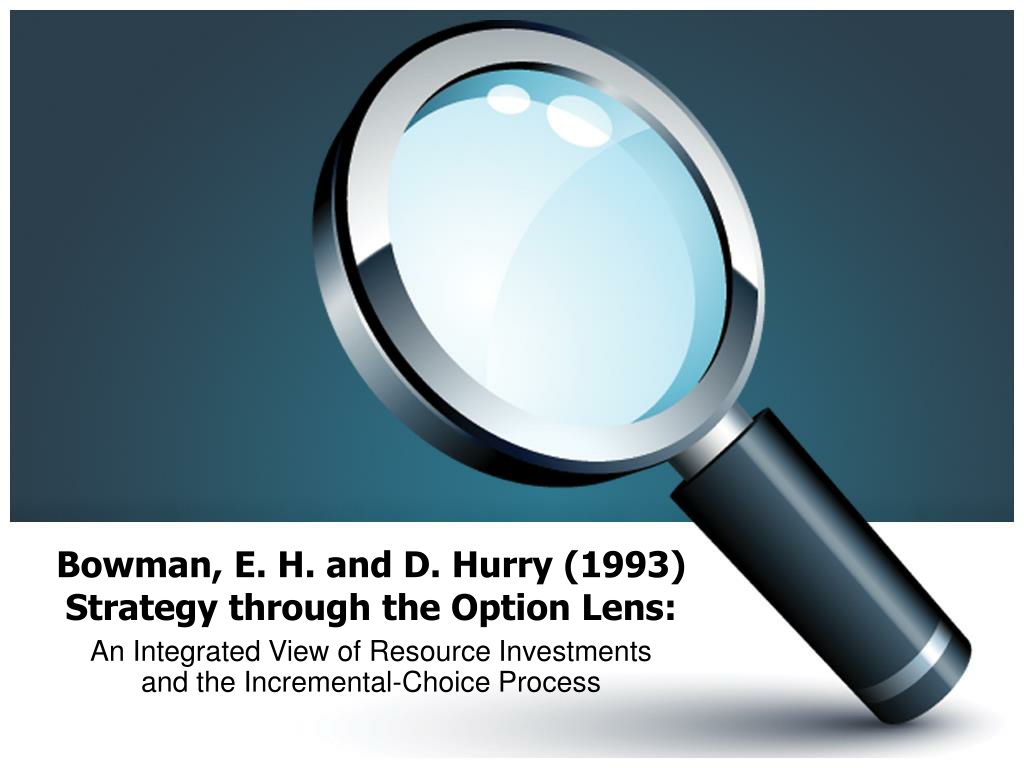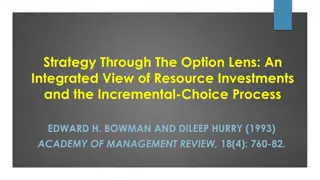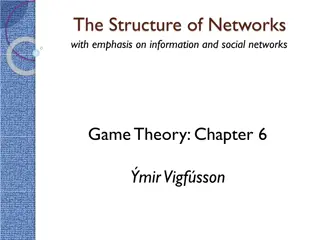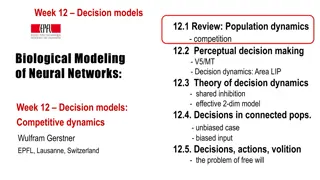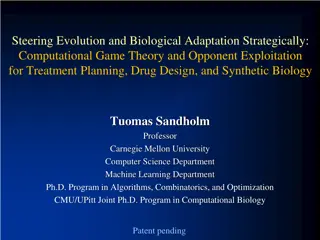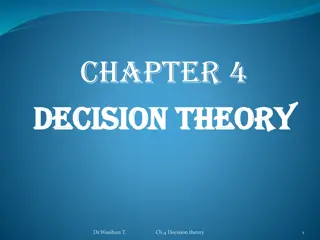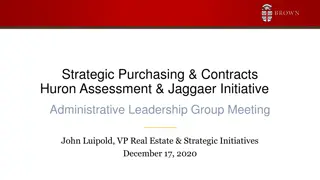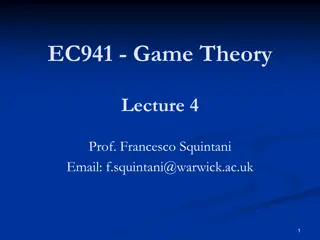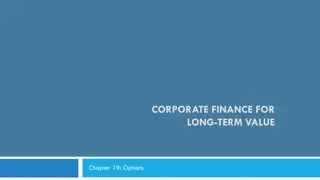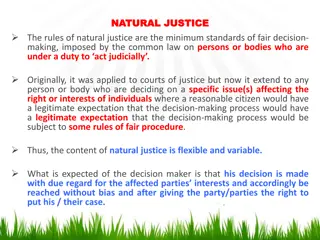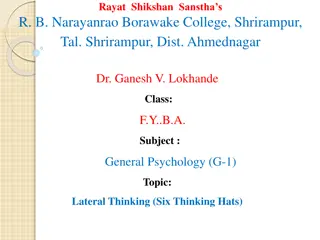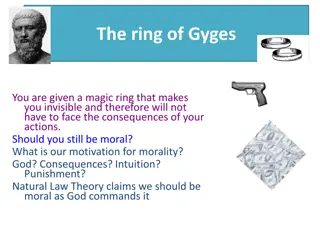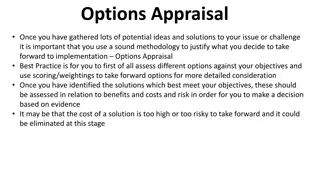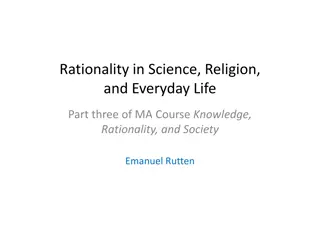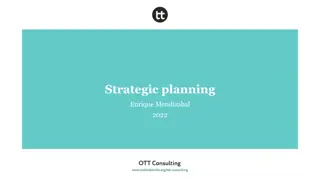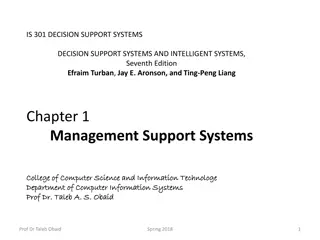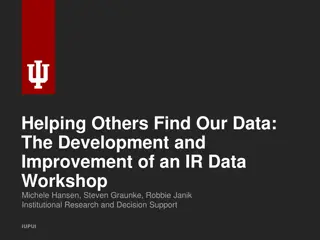Integrating Real Options Theory in Strategic Decision Making
This paper explores the application of Real Options Theory in strategic decision-making processes within organizations. It discusses how organizations can use options contracts to keep strategic opportunities open in the face of uncertainty, emphasizing the importance of recognizing and leveraging these options to enhance long-term growth and profitability. The theory also highlights the significance of managing downside risks and environmental uncertainty to make informed investment choices.
- Real Options
- Strategic Decision Making
- Organizational Strategy
- Risk Management
- Environmental Uncertainty
Download Presentation

Please find below an Image/Link to download the presentation.
The content on the website is provided AS IS for your information and personal use only. It may not be sold, licensed, or shared on other websites without obtaining consent from the author. Download presentation by click this link. If you encounter any issues during the download, it is possible that the publisher has removed the file from their server.
E N D
Presentation Transcript
Bowman, E. H. and D. Hurry (1993) Strategy through the Option Lens: An Integrated View of Resource Investments and the Incremental-Choice Process
The Options Lens Motivation This paper uses Real Options to offer an economizing view of organizational intuition (from the Behavioral Theory, March & Simon, 1958) to draw it closer to the realm of falsifiability Theory Authors propose a theoretical framework that integrates resource allocation, sense making, organizational learning and strategic positioning Overview The Options Lens views that organizational resources create option bundles for future strategic opportunities; however, these only come into being when decision makers recognize them.
Option Theory Individuals Options contracts developed from the desire to 'keep options open' against an (uncertain) unforeseeable future Calls (options to buy) Puts (options to sell) We see these often in car and home lease/rental agreements Holder makes a small investment, then waits for uncertainty to be reduced Options confer preferential access to an opportunity for investment choice. Corporate Strategy For a full-scale investment in a new market or country to be successful, an initial trial investment in the form of a joint venture often forms an essential first step (Kogut)
Shadow Option- prior to recognition Real Option- once recognized and an initial investment has been made Option Chain-strategies come from sequential striking of options Incremental Strategy- striking successive calls; abandoning calls or striking puts Flexibility-choices to switch investment streams (i.e. technologies)
Theory and Propositions Downside Risk and Optimal Inertia Firms have a Zone of Optimal Inertia Range between min(profit) and max(loss) Protects against downside risk and can allow a firm to remain in a less profitable industry longer P1: Organizations holding better developed bundles of options will expand more aggressively in growing markets and economic upturns, and they will persist longer in difficult markets and economic downturns, than competitors holding less developed option bundles. Perceived Environmental Uncertainty The value of an option increases as the volatility of the underlying asset s value rises Hence, managers will strive to hold options open in the face of high uncertainty P2: Given realistic perceptions of environmental uncertainty, organizations that hold options during unstable periods and strike options in stable periods will show superior long-term growth and profit performance compared to organizations exhibiting other types of investment behavior.
Propositions Size and Timing of Organizational Investments Organizations are most likely to be successful in new markets, businesses, technologies when they use small investments to develop capabilities. They then build on these by linking large investments to deploy those capabilities This helps explain both the frequent failure of acquisitions in new areas and the success of the Japanese in progressing from learning investments to full operations Corollary from Propositions 3 & 4: Organizations that enter new areas will achieve superior growth and performance (compared to organizations using other investment strategies) by starting with small investments to hold options open and following with large strike investments upon receiving both strike signals. Portfolio of Options (Business and Corporate Strategy) Each functional area of a firm can be considered an option (if it can be bought/sold independently); similarly, a firm can hold an option on a portfolio of 20 businesses The M-form approximates an option on a portfolio of assets P5: Organizations with structures that are capable of holding a portfolio of options will show wider diversification, with fewer divestitures, than organizations with structures that restrict choices to an option on a portfolio of assets.
Strategy Themes by the Options Lens TYPE of Decision Making Type of Analysis Deliberate - Economic Content Theories -Assume Rational Decision Making Emergent Behavioral Process' Themes -Assume naturally emergent decision making Sense Making -Managers make investment decisions based experience. -Managers perception, interpretation, values, beliefs and experience matter -Doesn t consider efficiency Resource allocation -Focus on operating efficiency Invest to create competitive barriers or use acquisitions or divestitures to reduce TC Relatively less future oriented StrategicPositioning Invest to sustain performance into foreseeable future high inimitability of resources develop portfolios of skills and capabilities Learning Acquire knowledge for future through incremental investments such as limited search exploration --Doesn t make the connection between strategy choices; strategy is path-dependent Relatively more future oriented
New Explanations for Old Findings Observed differences in investment behavior of firms under identical circumstances due to differences in their cost-benefit judgments (how do they value options) Adaptation vs. Selection Organizations seeking to adapt to the environment in period (t) in reality position themselves for opportunities in period (t+1) Risk-Return Paradox An observed negative correlation exists between firms profitability and the variability of profits However, under the options view, managers will retain less profitable investments for their option value when there is high variability, and will make more profitable investments when performance variability decreases (via external conditions and learning)
Conclusion and Discussion The Options Lens helps bring to light the common thread that runs through the economic and behavioral approaches to strategy. It is valuable to make small investments in options, followed by large investments in option strikes. Small investments help experimentation, learning, and limit downside risk. Does the Real Options view have anything more to add to Barney s Strategic Factor Markets (1986) paper? What would the Real Options lens recommend to a company needing a turnaround strategy?
